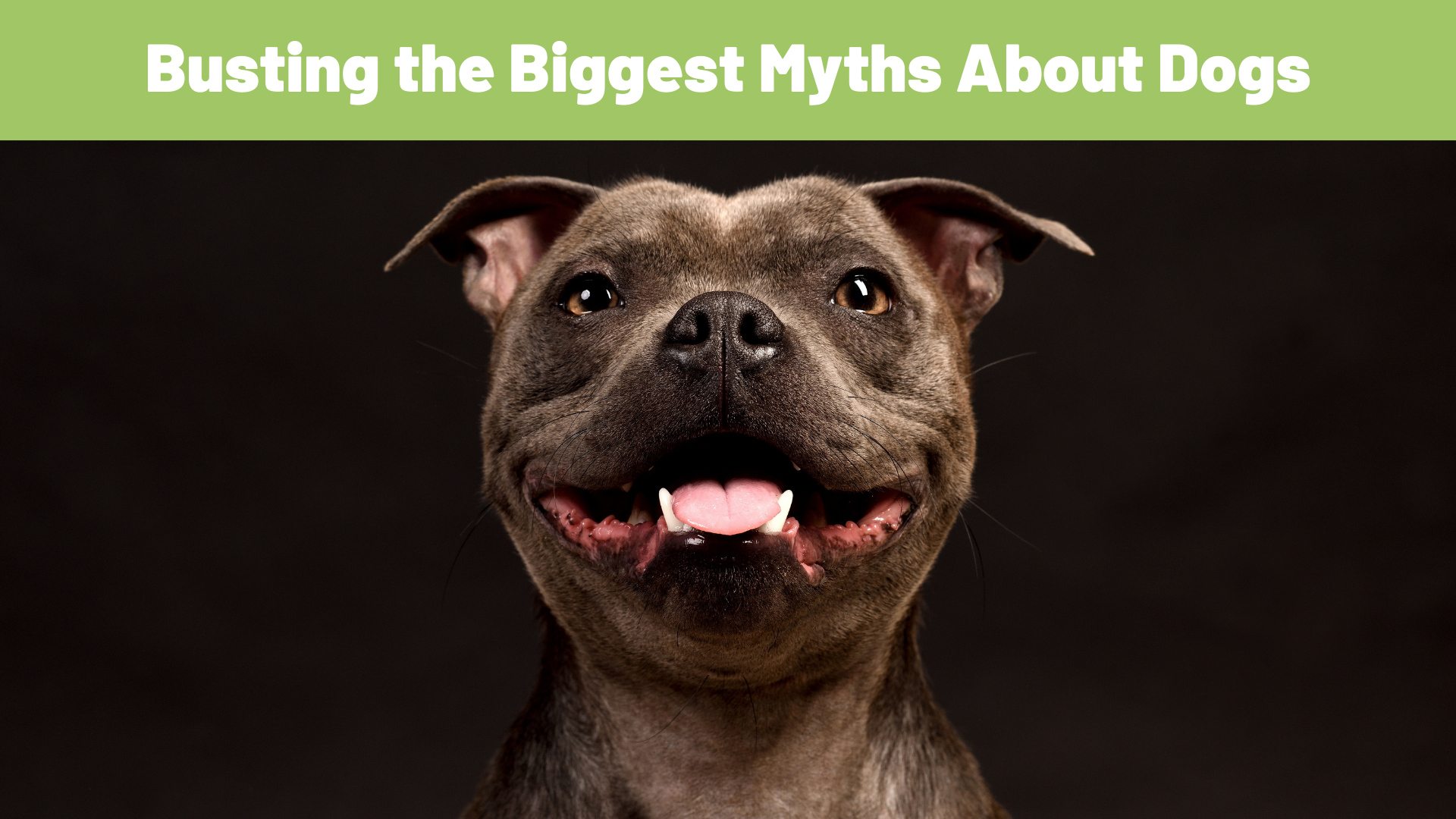Dogs are our furry companions, best friends, and loyal members of the family. But through the years, some myths have cropped up about them that just aren’t true. These myths can lead to misunderstandings, fear, and even mistreatment of dogs. So let’s bust some of the most common myths about our canine companions!
Myth #1: All Dogs Are Good With Children
While many dogs are wonderful with children, it’s important to remember that every dog is an individual. Some breeds may be naturally more gentle and patient with children, while others may be more energetic or territorial. It’s crucial to socialize dogs properly from a young age and teach them how to interact gently with children. Never leave a young child unsupervised with any dog, regardless of breed.
Myth #2: You Can’t Teach an Old Dog New Tricks
This saying might be catchy, but it’s definitely not true! While puppies may learn more quickly, adult dogs are perfectly capable of learning new things. It may take a bit more patience and positive reinforcement, but with consistent training, even senior dogs can master new commands and tricks.

Myth #3: Dogs Only Wag Their Tails When They’re Happy
While tail wags are often associated with happiness, they can also communicate other emotions. A slow wag may indicate uncertainty, while a high, rapid wag can be a sign of excitement or nervousness. Paying attention to the overall body language of a dog, including facial expressions and posture, can help you understand what their tail wag is really saying.
Myth #4: Dogs Need to Be Fed Table Scraps
Human food can be unhealthy for dogs and can lead to obesity, digestive problems, and even pancreatitis. It’s best to stick to high-quality dog food and avoid giving your dog table scraps or human treats. If you want to give your dog a special treat, there are plenty of healthy dog treats available at pet stores.
Myth #5: Dogs Are Naturally Aggressive
Dogs are not born aggressive. Aggression is usually a result of fear, pain, or lack of socialization. With proper training, socialization, and positive reinforcement, dogs can learn to be calm, confident, and friendly companions.
Myth #6: Pit Bulls Are Inherently Dangerous
Pit bulls, like any breed of dog, have been bred for specific purposes. Unfortunately, some unscrupulous breeders have bred pit bulls for fighting, which has led to a negative stereotype of the breed. However, Pit bulls can be loving, loyal, and gentle companions when raised in responsible homes. Judging any dog based on its breed is unfair and dangerous.

Myth #7: Dogs Can Smile
While dogs may appear to be smiling when they pant with their tongues lolling out, they are not actually smiling. This expression is a physiological response to help them cool down. True smiles in dogs involve a combination of ear drooping, tongue lolling, and open mouth, but it’s not the same as a human smile.
Myth #8: Dogs Understand Every Word We Say
While dogs are intelligent creatures, they don’t understand every word we say. However, they are excellent at picking up on our tone of voice and body language. So, talking to your dog in a loving and positive way will help them feel happy and secure.
Myth #9: Dogs Eat Grass When They’re Sick
While some dogs do eat grass and then vomit, this is not always a sign that they are sick. Some dogs simply enjoy the taste or texture of grass. If you’re concerned about your dog eating grass, talk to your veterinarian.
Myth #10: Leaving a Dog Outside in the Yard is Enough Exercise
Dogs are social creatures who need more than just food and water. They need regular exercise, both physical and mental. Leaving a dog outside in the yard all day is not enough to meet their needs. Make sure to take your dog for walks, play games with them, and provide them with plenty of opportunities to socialize with other dogs and people.
By understanding and dispelling these myths, we can help to create a better world for both dogs and humans. So, the next time you hear one of these myths, be sure to share the truth!
I hope this blog post has helped to bust some of the most common myths about dogs. If you have any other questions about dogs, please feel free to leave a comment below. Get updated knowledge on how to feed raw, discounts, coupons, and holistic rearing at www.RawOrigins.pet.

